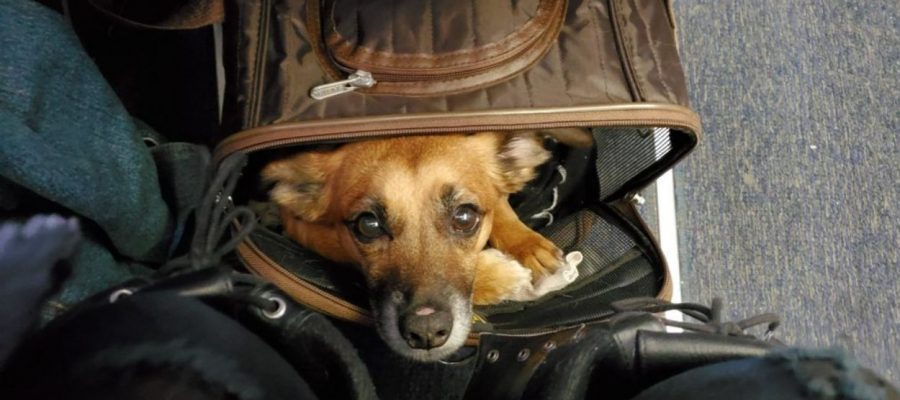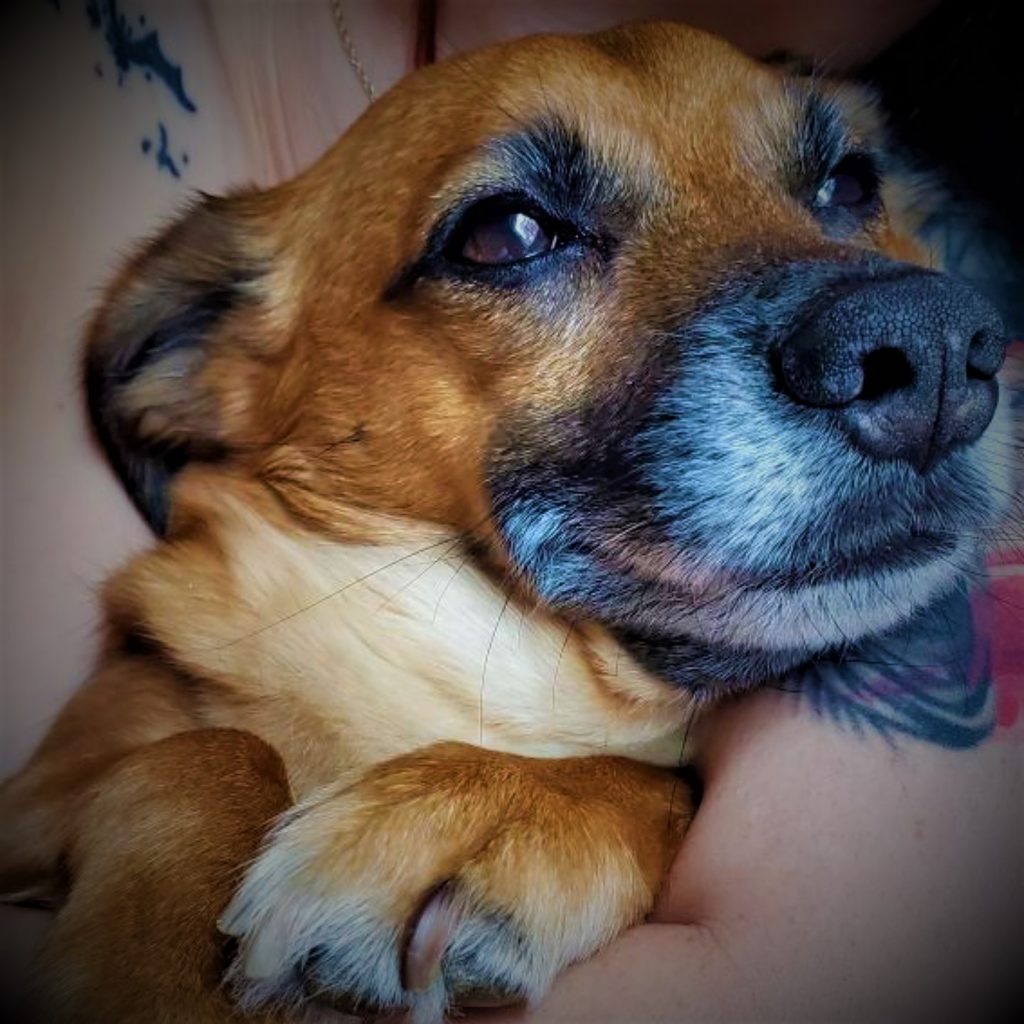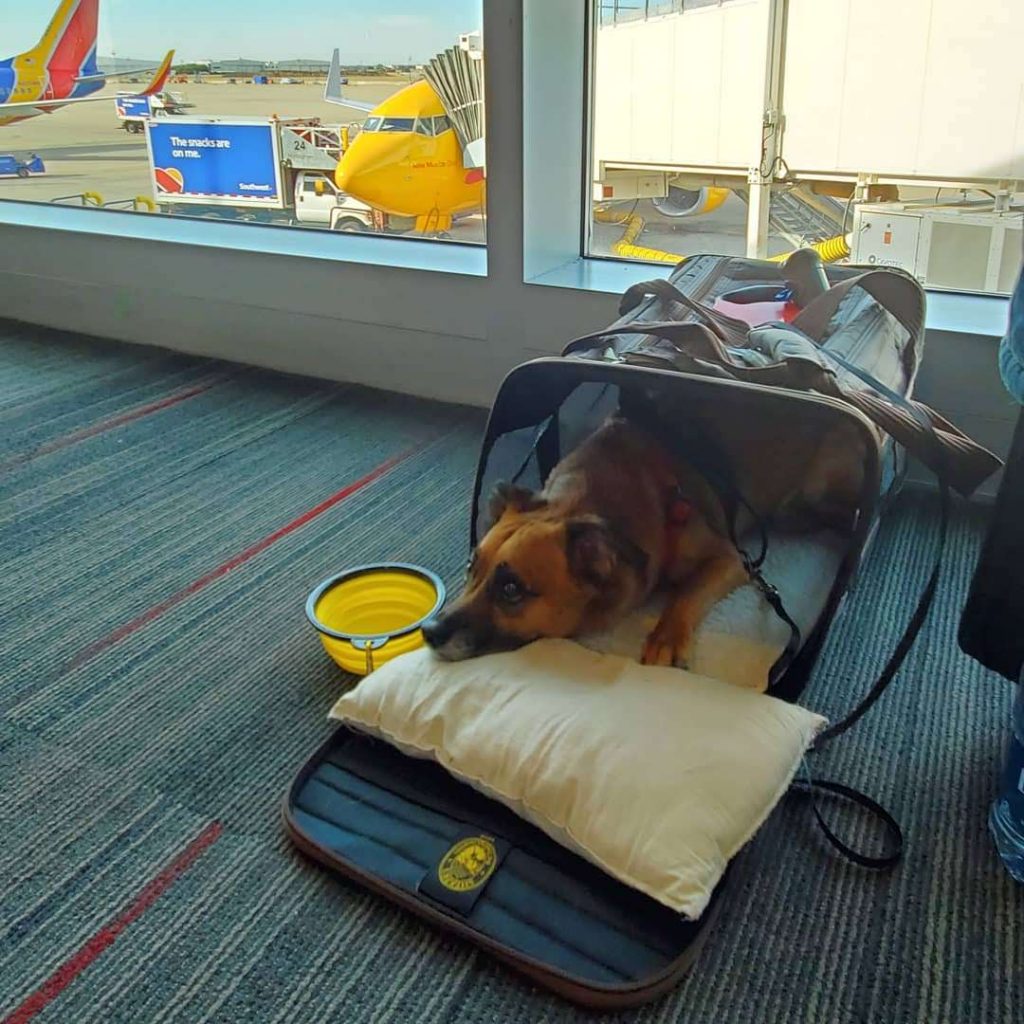The plan to move to Europe was something that had been brewing in us individually before we even met. Not long after we started dating, we were lucky enough to go on a 6-week backpacking trip that changed our lives completely. Each country made an impression but Amsterdam just felt like home. From that moment, we talked about it for years and researched just for fun. Four years later, we were married with a dog and house so our plan to move required a lot more steps.
The concept of traveling with our dog was worrisome because our dog is worrisome. He’s hyper-vigilant and super anxious, terrified of new situations and loud sounds. He’s also a world class cuddle champion with a level of innocence and sweetness that cannot be matched. We’re confident that one sappy look with his big doe eyes can get us through any travel hiccups as long as we have the right paperwork.
An extensive amount of research has told us that traveling with a pet is a complicated process that requires months of planning. If you’re located within the EU, pets can get a passport from an authorized veterinarian. If you’re located outside of the EU, you need a pet certificate. A pet heath certificate is an essential piece of paperwork that demonstrates the vaccination and microchip information for your pet.
The certificate/passport process replaces the old system of quarantine that kept animals in holding for 3-24 weeks to ensure they brought in no diseases. When shooting a film in England, Elizabeth Taylor famously leased a yacht for $20,000 (roughly $138,000 today) to keep her dogs away from English soil to avoid the quarantine laws. Essentially, the old system was strict as hell and immovable, even for celebrities. Now, it’s a system that requires good records, time-sensitive documents, and the right certified veterinarian.
Pet Health Certificate
Each country has different requirements for different types of pets so it’s best to start with the USDA website. Interestingly, pet travel is managed by the United States Department of Agriculture (USDA): Animal and Plant Health Inspection Service in your state. We’re traveling with our 5-year-old Jack Russell Terrier (19 lbs or 9 kg) to the Netherlands so the advice we’ll be giving is traveling with our dog, Iggy, to Amsterdam.
Travel Requirements
Traveling to the Netherlands with a dog requires the following before you can get the right paperwork started:
- Old Enough to Travel: It’s important to know that many EU states do not allow the entrance of pets less than 15 weeks old. There are some exceptions but vaccinations are the most important.. If the age is close, the rabies vaccine must be at least 21 days old.
- Microchip: Your pet’s microchip should be a 15-digit number that can be confirmed by the manufacturer. Iggy was micro-chipped by the previous owner by Home Again but it took some time to get the chip information transferred to me. We had to find the original owners, we found him on Craigslist, so it took some detective work and almost a year (this was years ago).
- Rabies Vaccination: The USDA is particular about the rabies vaccination timeline. The vaccination must occur the same day as or AFTER microchip implantation. Anything before the microchip is invalid. Luckily, Iggy’s previous owners were diligent in his vaccinations and gave us vet records when we adopted him. He was given the 3-year vaccination; the 1, 2, and 3-year vaccinations are all valid so long as they stay current and doesn’t expire within the travel time. You must have the rabies vaccination certificate, preferably originals, for your paperwork.
- Find a USDA-Certified Veterinarian: Finding a vet to help with international paperwork takes a little bit of research, as does ensuring their certification is up-to-date. We needed a “non-commercial” health certificate, which must be done 10 days before you travel. The paperwork is referred to as an APHIS endorsement, all of which is completed by your vet. You can call around to local vets and ask or you can do what I did: email your state’s NVAP Coordinator for a list of accredited veterinarians near you. They answered quickly with a list a couple days later.
- A Foreign Address: Before you make a vet appointment, it’s important to know you have to have a European address to complete the application. Most people have this by the time they’re 10 days away from travel but some reservations do not reveal the address until right before the arrival date. Our AirBnB host is very understanding so we had no problems.
Once I found the right veterinarian, we made an appointment to check in and have Iggy’s paperwork looked over. She verified our records and gave us a packet that explained the process to us. The process goes like this:
- Exactly 10 days before your departure date, go to your vet to get the paperwork together. The vet has the paperwork you need, so bring copies of all vaccination records and microchip information (needs to have the date, number, and company included).
- The vet verifies all the information again and puts it all together; it costs around $250.
- You have to immediately go to the post office to overnight the paperwork along with a check for $25.00 and a prepaid return envelope, which we also did overnight; this cost an extra $40.
After that, you simply hope there are no issues and wait patiently for the return envelop to arrive. If there’s any problem, they contact your vet or any providers listed in the records you sent. We had to send all our original pet records so I was extra nervous. The only other option was to drive from Dallas to Austin to turn it in ourselves. Thankfully, we received everything back about 2 business days later. Make copies of this paperwork and plan to bring all records. I make copies of everything, brought all records needed in an expandable folder. We were stopped at customs declaration and they wanted to see everything.
Once you have the certificate, it’s only valid for a few months. After you arrive and register with the city, you should find a veterinarian that helps with passports right away. We’ve been in Amsterdam for nearly one month, we plan to tackle this as soon as we move to our new apartment this week.
We’ll make sure to tell you more about how to fly with a dog and how to get a pet passport in future articles! Make sure to follow us or subscribe for updates!



